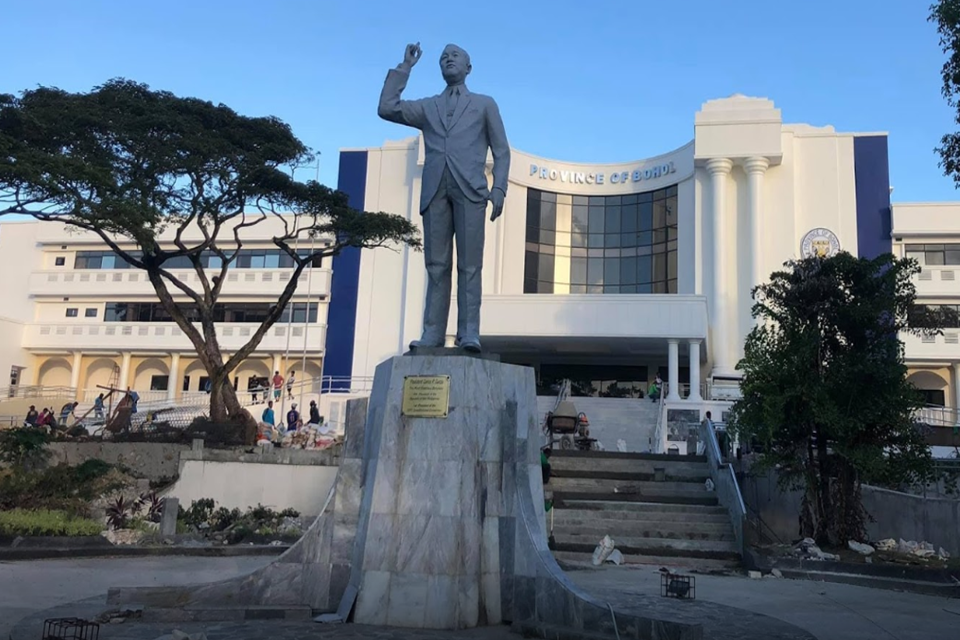NOTE: THIS STORY WAS FIRST PUBLISHED IN THE BOHOL CHRONICLE’S SUNDAY PRINT EDITION.
For the first time in the annals of local governance, the revenue sources of the provincial government are being closely reviewed in order to effect a better fiscal management under the Aumentado administration.
Chairman Leoncio “Jun” Evasco of the Office of Governance, Accountability and Review (OGAR) emphasized their mandate to find ways to institute budget reforms.
These reforms can only be achieved if a review of the entire budget process from preparation, authorization/legislation, implementation/execution and accountability.
Adopting a slow but sure strategy at the start, OGAR has now shifted to high gear as it began reviewing the Province of Bohol revenue sources and Statement of Appropriations, Obligations and Balances (SAOB) Report.
STATEMENT OF RECEIPTS
Armed with data, OGAR members, particularly its vice-chairman, former Tagbilaran City Mayor Dan Neri Lim quizzed Provincial Treasurer Eustaquio A. Socorin, on the statement of receipts.
Lim asked Socorin to explain why in 2019, the Total Receipts were ₱2.273 billion and it went up by only ₱300 million to ₱2.273 billion in 2020 which is the first full budget year of the Yap administration. However, the figures become relevant since, despite the pandemic, the 2021 Program jumped up to ₱4.406 billion for a staggering 70% hike or ₱1.833 billion additional.
INCOME SOURCES
OGAR’s scrutiny of the Sources of Revenues revealed that the increase between the 2020 and 2021 levels came mainly from:
Non-Tax Revenues: from ₱233 million to ₱771 million, an increase of ₱538 million; Internal Revenue: from ₱2.257 billion to ₱2.419 billion, an increase of ₱162 million;
Borrowings: ₱1.126B. further scrutiny of Non-Tax Revenues revealed that the increases came from: Income from Hospital: from ₱151 million to ₱320 million, an increase of ₱169 million; Rental of Office Spaces: from ₱4.6 million to ₱15 million, an increase of ₱10.4 million; Share from Chocolate Hills: from ₱3.8 million to ₱16 million, an increase of ₱12.2 million; Rental of Heavy Equipment: from ₱0.9 million to ₱8 million, an increase of ₱7.1 million; Operation of RT-PCR Laboratory: additional ₱122 million;
Operation of Provincial Diagnostic and Ambulatory Facility: additional ₱51 million; Operation of CIC: additional ₱30 million.
These figures have proven that the Provincial Government of Bohol, the previous, had put more burden on the suffering Boholanos in their time of need during the pandemic by requiring them to pay for services that could have been provided for free by the government. It appears the government was earning revenues from multiple sources despite the high taxes already paid by the people. Are the taxes the people pay not enough?
TIMING OF UTILIZATION
Also with these findings, OGAR is discerning if the revenue projections in 2021 were bloated for hidden reasons with the view that the Yap Administration can possibly have a bigger base to perhaps play around with.
Documents are now being gathered from the Provincial Treasurer’s Office to add credence to these OGAR findings.
Using the SAOB report received from the Provincial Budget Office for the period January 1 to July 31, 2022, which corresponds to the last months of the Yap Administration (inclusive of the election months leading to May), OGAR found the following data which were so glaring to ignore:
The 2022 Budget for Donations alone from various departments is ₱528 million of which P385 million or 73% was already obligated.
From Bohol Employment and Placement Office (BEMO) is a donation of ₱159.5 million budgeted for Rural Emergency Employment Assistance Program (REEAP).
OGAR was told that this is for “Cash for Work”. ₱142.3 million or 89% was obligated. From Non-Office, OGAR found that there is a donation for Buhat Pasulti-on Medical Program for Senior Citizens for Health Development budgeted for ₱100 million of which ₱97 million or 97% was obligated.
Complete supporting documents for these two oversized budget line items are now being obtained from the Provincial Accountant and COA to determine if these were obligated.

